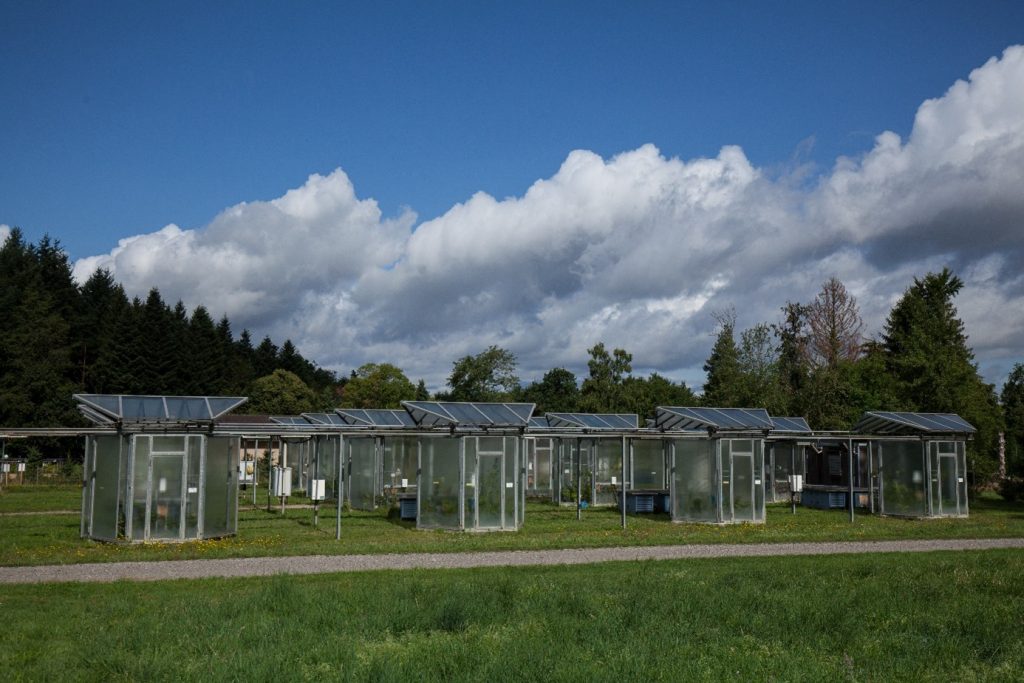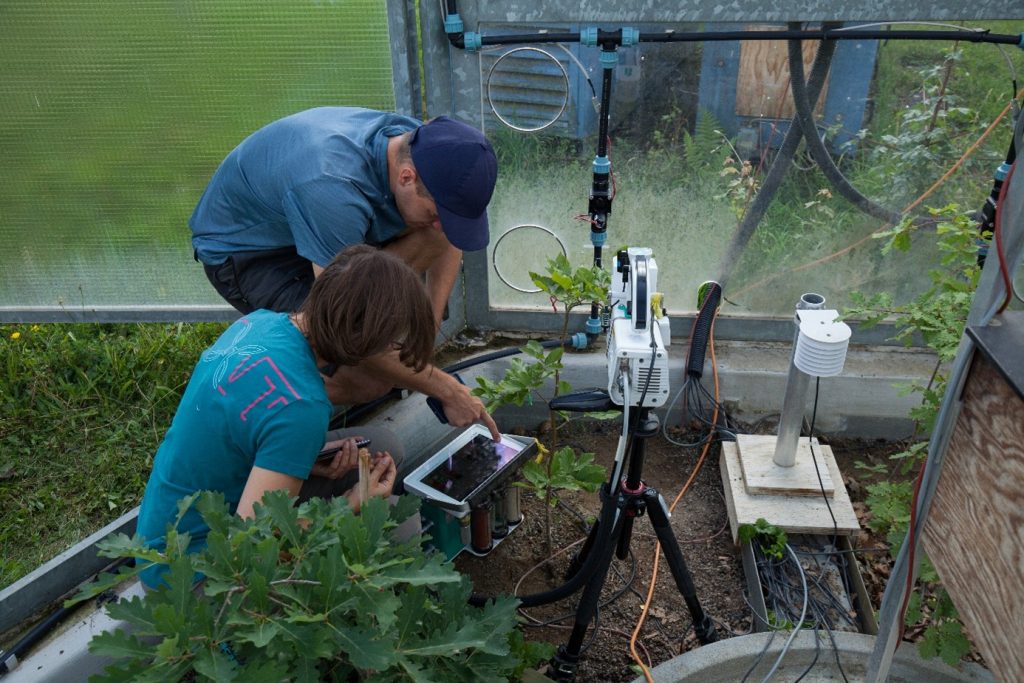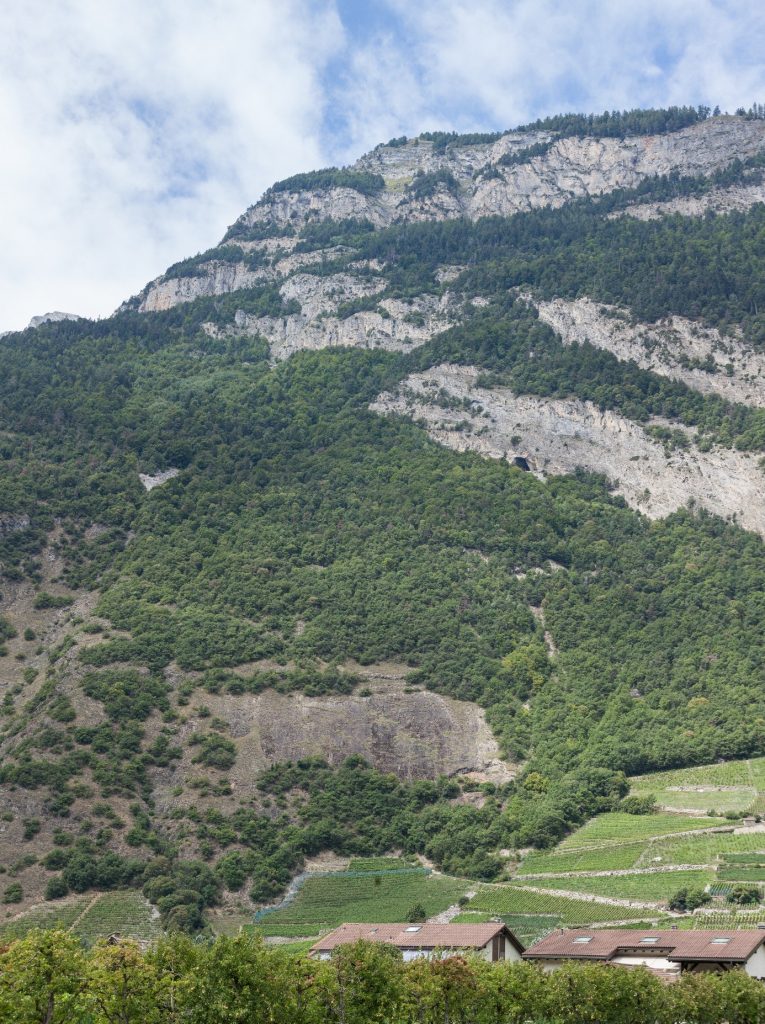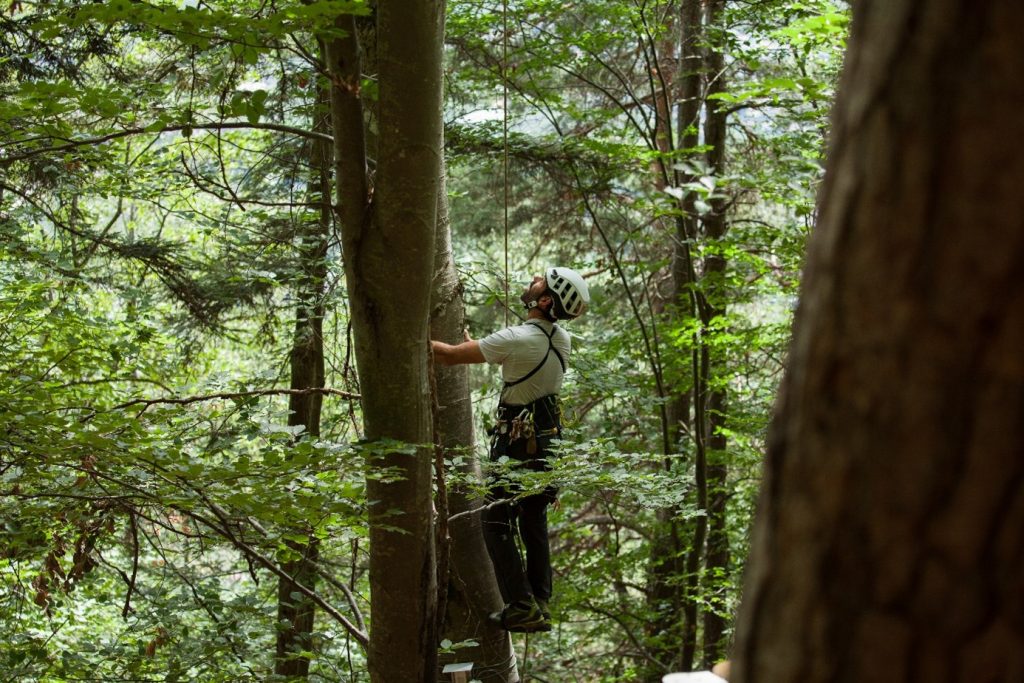Hot droughts (i.e., warmer air temperatures combined with drought) are becoming increasingly frequent and severe with rising global surface temperature, with devastating impacts on forest ecosystems. One main challenge for trees under hot droughts is to maintain optimal performance, including carbon (C) exchange (i.e., carbon uptake by photosynthesis and carbon loss by respiration). Even though trees can adjust to a certain extent to new environmental conditions, their response might be modulated by species interactions, which can modify (increase or decrease) resource access.
Using an experimental climatic manipulation in open-top chambers on tree seedling and a field study of natural mature mixed vs. pure forest stands along an elevational gradient in Valais (Switzerland), we investigate trees’ physiological responses to warmer and drier conditions from leaf- to forest-level.
Our objectives are to:
- Disentangle the individual and combined impacts of heat and drought on leaf- and canopy-level carbon exchange and the modulating role of species interactions
- Determine weather species interactions can mitigate the adverse impacts of hot droughts on tree performance in natural mixed pure forest stands
The results of this project will provide insight into one of the most pressing threats associated with climate change, namely how the exacerbation of droughts with elevated air temperature alter forests and the functions and services they furnish. It will also provide benchmark information on forest’s strategy and ability to tolerate heat and drought, which is critical to improve current model predictions on forest vulnerability to climate change.




For more information contact Janisse Deluigi.